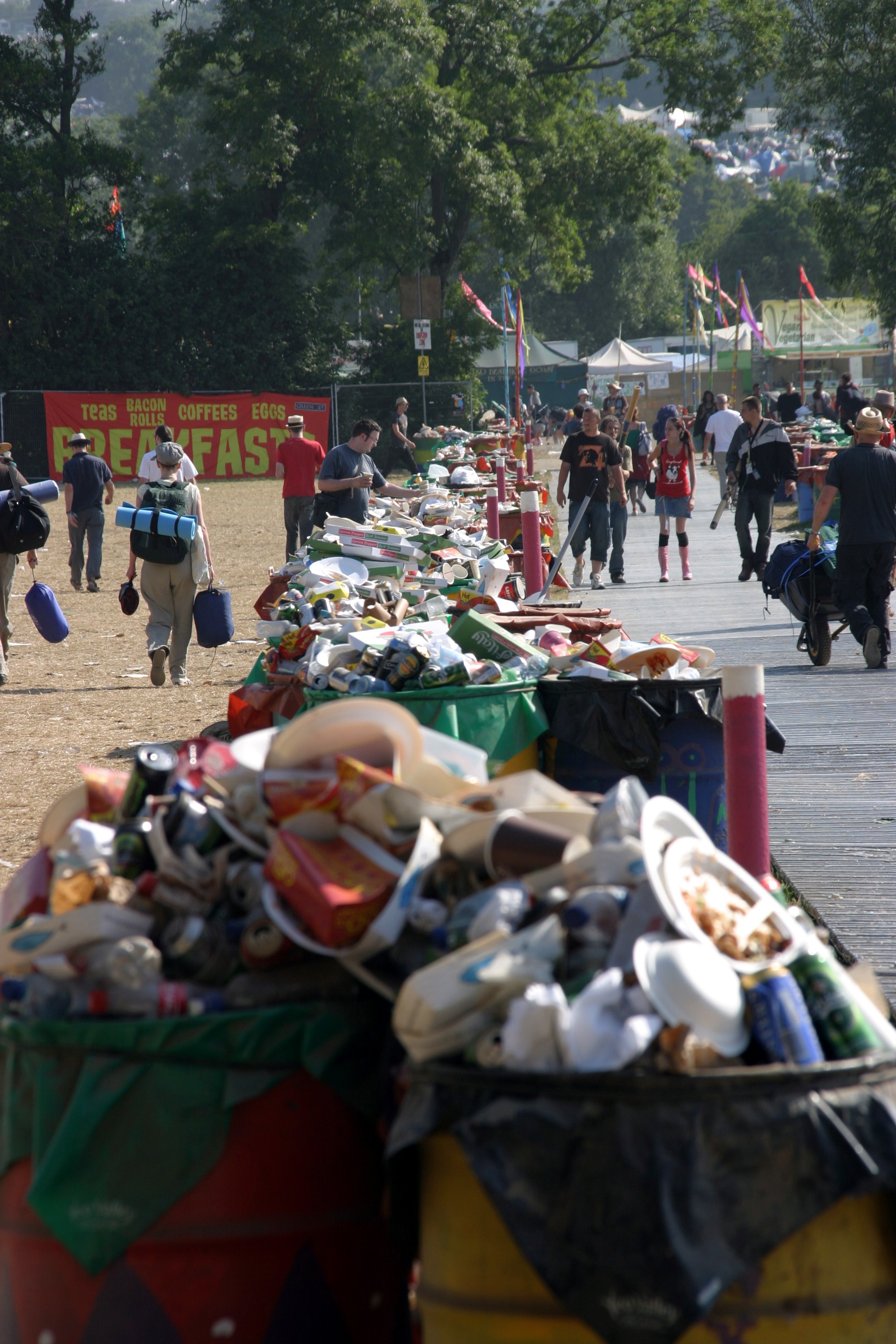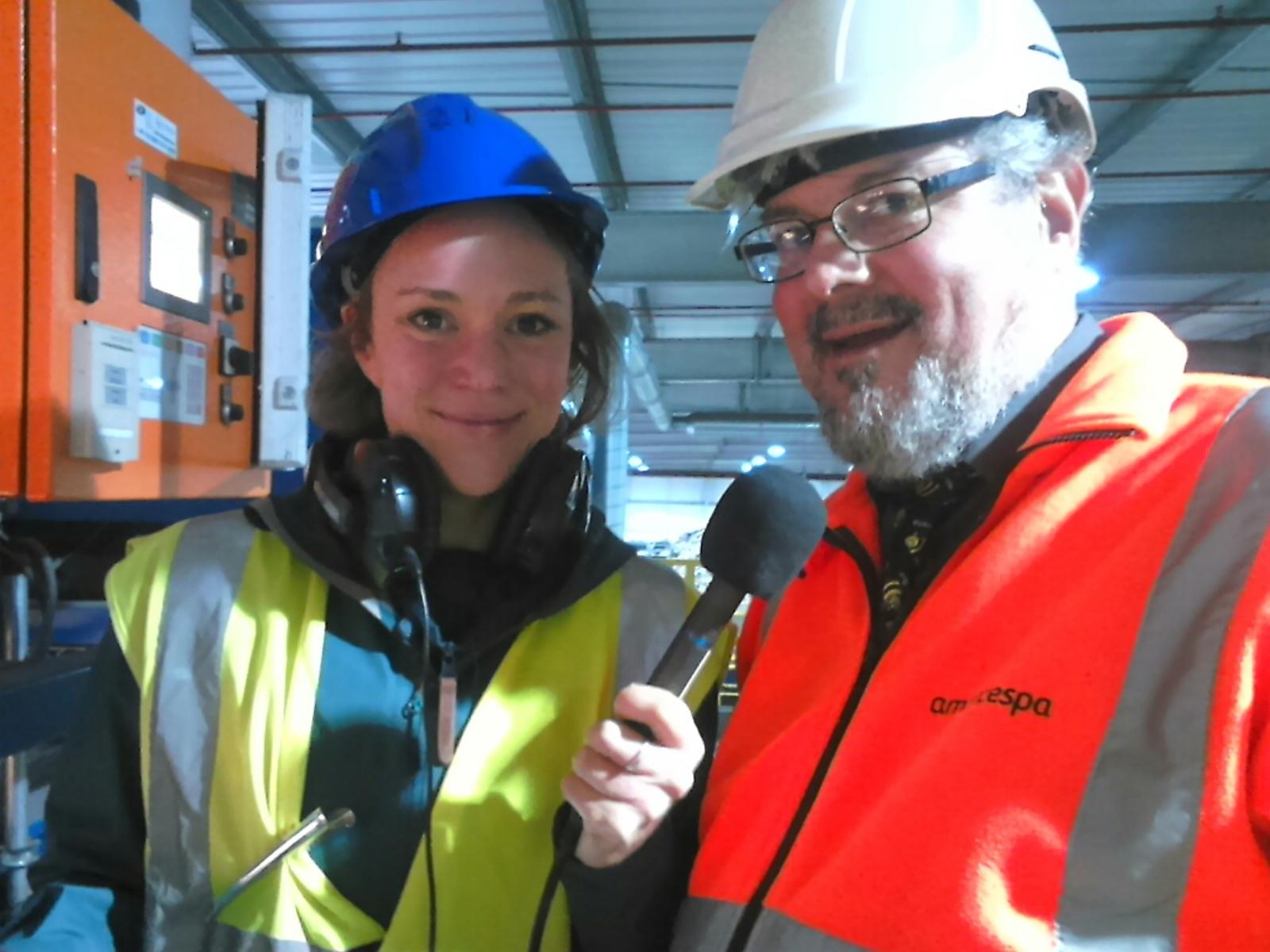Can plastics be recycled?
Interview with
To reduce the global impact of plastics - and to save money - many countries now promote "recycling" programmes to keep plastics in circulation and out of landfill, or the ocean. In Cambridge, where we are, recyclable waste, including paper, metal, glass and plastics, goes into special "blue bins" that are collected and processed separately. But what happens next? Hannah Critchlow followed her rubbish on its journey to - and through - the recycling plant...
Hannah - I've just been food shopping. What's for dinner tonight? Well, let's  take a look in the bag - burger with kale, mushroom, fries and a glass of wine, followed by yogurt, milk and a tin of prunes for my morning breakfast. Well, my stomach is satisfied but I seem to have immediately produced a lot of waste, all of which goes in my blue recycling bin. But what happens to this detritus now? Cambridge city council serves over 50,000 households including mine and I met the man who pick up our rubbish for recycling on their morning rounds.
take a look in the bag - burger with kale, mushroom, fries and a glass of wine, followed by yogurt, milk and a tin of prunes for my morning breakfast. Well, my stomach is satisfied but I seem to have immediately produced a lot of waste, all of which goes in my blue recycling bin. But what happens to this detritus now? Cambridge city council serves over 50,000 households including mine and I met the man who pick up our rubbish for recycling on their morning rounds.
Mark - I'm Marco from Cambridge.
James - James from Great Shelford.
James J - James from Cambridge.
Hannah - How many bins do you empty each day?
Mark - Maybe around a thousand to 1200 at least.
Hannah - Each day?
Mark - Each day, blue bins we pick up around 12 to 13 tons a day.
Hannah - You guys got quite a lot of exercise, don't you, running around?
James - Yeah. It keeps us very fit indeed, yes.
Hannah - Do you know how far on average you might run each day?
James - Between 12 and 15 miles a day. Behind the lorry, yup trying to keep up.
Hannah - I left these chipper chaps to continue their round and followed my blue bin waste 8 miles up the road to the next stage in its recycling journey.
Mark S - Mark Shelton. I'm waste education manager at AmeyCespa at  Waterbeach. We're in the materials recovery facility at Waterbeach where we take 350 tons of mixed waste every day from the council's blue bin collections.
Waterbeach. We're in the materials recovery facility at Waterbeach where we take 350 tons of mixed waste every day from the council's blue bin collections.
Hannah - We're stood in front of a very complicated looking football stadium-sized pitch area of conveyor belts which are multi-layered, one on top of the other. So, 350 tons of blue waste rubbish are zooming past on this conveyor belt every single day. How exactly are they being separated?
Mark S - There's a range of different machinery that the conveyor belts feed into. So, the first bit of machinery separates out glass. It's basically a crusher that crushes the waste and then there's a series of vibrating plates that separate out the glass. The next stage is the cardboard separator and that separates out old corrugated card like the large brown boxes. Simply because it's much larger than everything else. It then passes to a machine that separates out paper and that's called a star screen. It's got a series of revolving wheels in the shape of stars. The paper rides across the top of the wheels and the rest of the waste falls through.
Hannah - A series of magnetic separators then remove the metal cans for recycling. We're now left with some very different plastics - my milk carton, plastic bag and film, burger tray and yogurt pot. How are these all managed?
Mark S - We've got three near infrared separators and they separate out the plastic on the basis that different polymers reflect different wavelengths of near infrared light. So, the plastic is moving along a conveyor belt. Near infrared light beams are shone down on the plastic. There is a receptor that picks up the reflected wavelengths. That then works some air jets and the air jets are able to blow different polymers in slightly different directions to separate them.
So, we're standing now beside a near infrared separator now and in the background, you can hear that noise which are the air jets. You've got a conveyor belt in front of us rolling very quickly. The plastics are coming along the conveyor and they're blown across the divide wall. The plastics that are being separated out by this particular piece of equipment, pots tubs and trays are being blown over the divide wall and the other plastics are just falling straight down and then the plastics fall straight down. We'll go to the next separator.
Hannah - Mark and I moved away from the rubbish stench to a quieter place to explore the next part in the plastic journey.
Mark - Plastic is very light so we want to bale it as compact as we can so that when we're transporting it in the lorries to the actual companies that do the recycling, the reprocessors themselves, we're using as little diesel as possible.
Hannah - And so, these bundles, these bales that look very similar to hay bales although obviously, they're made of plastic.
Mark - And they're a lot larger. Yes, we need a forklift truck to lift them. We put them into lorries and they take the materials to different reprocessors, the people who actually do the recycling. The plastic bottles, the milk containers, fizzy bottles go to a company called Jayplas who are based in Corby and they're able to turn the material back into food grade plastics which are used for food containers and drinks containers. So, more bottles ready for refilling. Corby is one of our most local reprocessors. They're only about 50 miles away. The pots, tubs and trays, they may well go to Europe because the industries that actually use that material to make new pots, tubs and trays again, it goes back into food grade plastics, are based in Belgium. The plastic film may have to go slightly further perhaps to Malaysia again, because that's where the industries are that require that material and that's used obviously instead of a raw material and that is then made back into a range of different products. It could be new bags.
Hannah - Plastic recycling seems to require a lot of energy. I asked David MacKay who worked as chief scientific adviser to the government on climate change if it was all worth it. He jotted down some calculations and said that as a guideline, to ensure recycling is nowhere near pointless. His rule of thumb is that waste shouldn't travel more than 600 km by road or more that 6,000 km by the more environmentally friendly method of ship or rail. Although he added that since plastic is made from fossil fuel of which there is a limited supply and reprocessing emits less carbon emissions than the energy costs of obtaining more oil to make new plastic a few more transport miles could be added to the equation. Well, I followed my plastic waste on its recycling journey. It'll be born as a new plastic product that I can use again and again. So, I'll keep sorting through my rubbish for recycling and Mark Shelton at AmeyCespa added that they were looking to send their sorted plastics to reprocessing plants closer to home in the future.
- Previous Plastics from Plants?
- Next How much plastic is in the ocean?










Comments
Add a comment